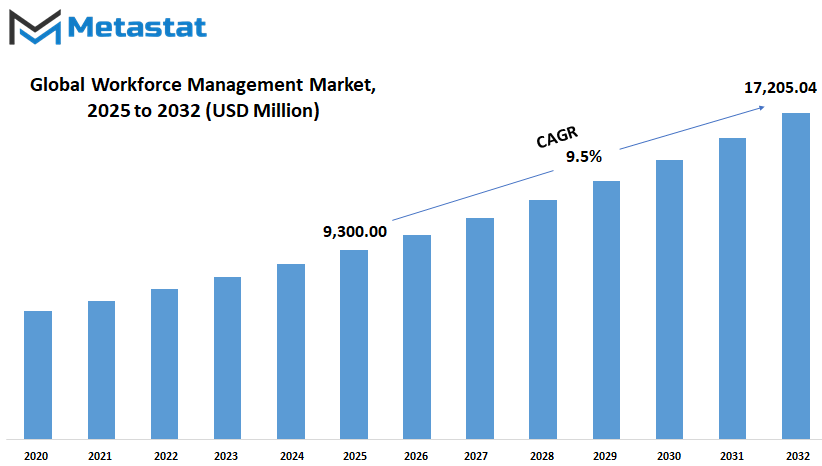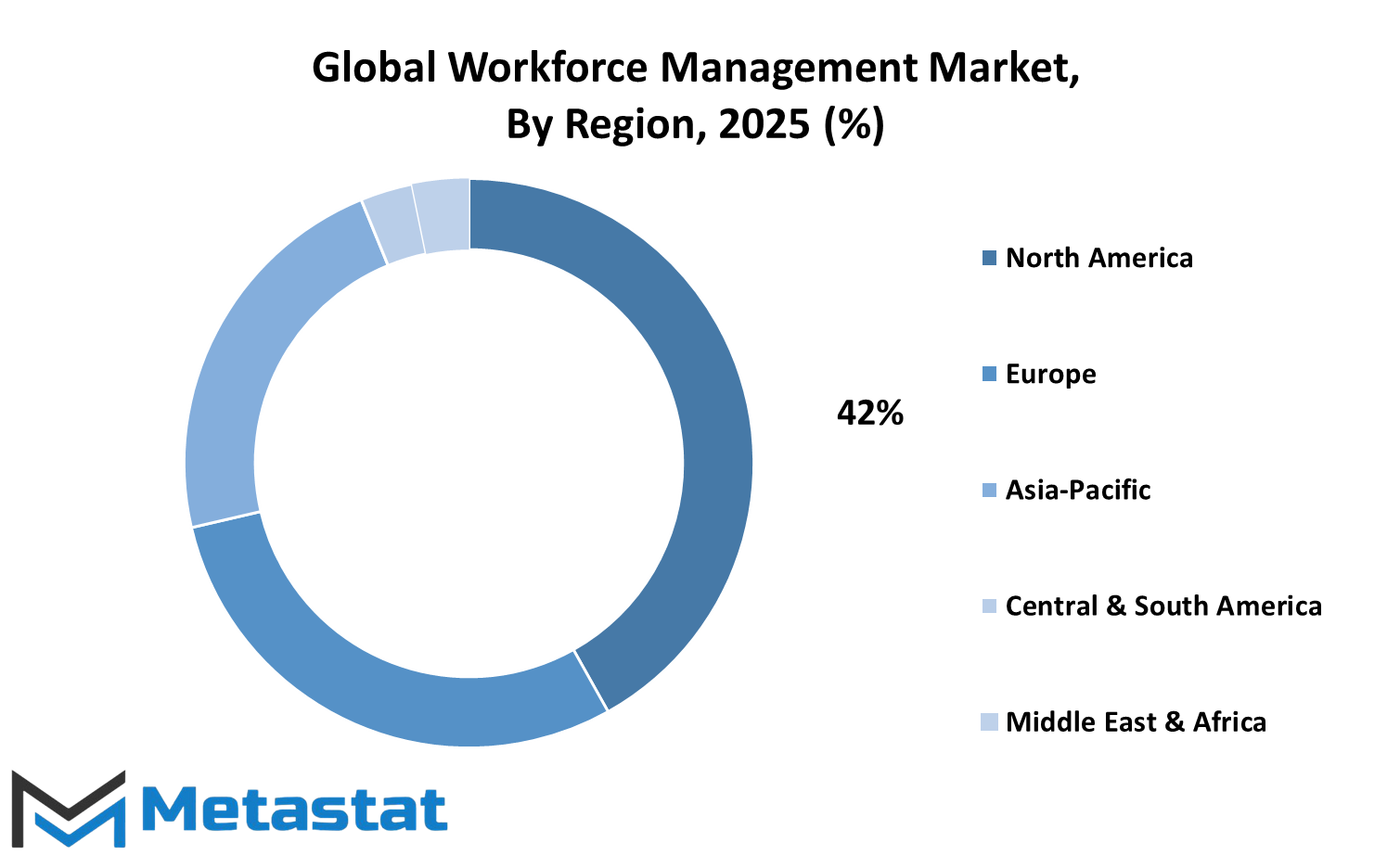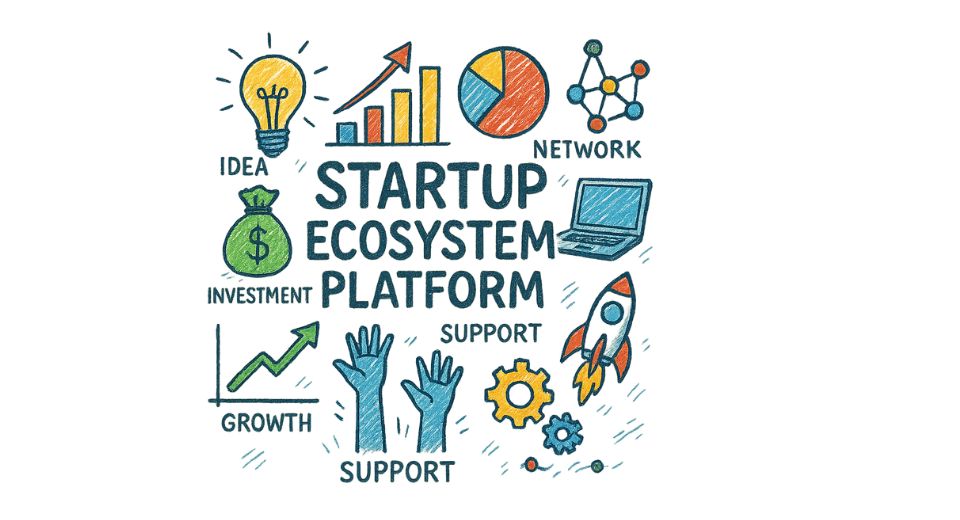MARKET OVERVIEW
The Global Workforce Management market is part of enterprise software and the broader HR technology industry and continues to affect organizational alignment of labor operations with strategic goals. This market includes developing and implementing systems that enable organizations to improve productivity and optimize employee scheduling as well as to monitor compliance with labor regulations not just attendance tracking or payroll but operational control together with predictive planning, thereby amalgamating the two into a core organizational infrastructure.
For organizations of various types, workforce management platforms will increasingly facilitate day-to-day staffing as well as long-term employee strategies. Such platforms would be expected to get more sophisticated and digress from mere timekeeping or shift assignments. The Global Workforce Management market will be monopolized by tools examining workforce behavior, real-time changes in staffing patterns, and through aligned distribution of human resources with business performance targets. As operations become continuously dependent on data, the companies will need systems that will not only manage but also interpret the data to guide decisions.
The Global Workforce Management market will belong to a wide range of functionalities, including forecasting, scheduling, leave management, task distribution, and compliance tracking. All will be linked together with a single platform, ensuring data to be available in real time and centralized in access. Industries such as retail, healthcare, manufacturing, and logistics will use these platforms to deal with problems caused by high-volume scheduling, shift variability, and labor law compliance. The market will also look into complicated areas of remote working, cross-country labor management, and multi-site operations.
These software solutions will come alive with a big emphasis on flexibility and customization. Due to the increase in specific roles assigned to employees, organizations would be looking at configurable tools that would match specific operational workflows. Most applications within the Global Workforce Management market would produce user-designed platforms to streamline administrative processes while giving insightful reports to management teams. Interfaces will be intuitive, governing end adoption by every level of an organization from frontline managers to HR executives.
The Global Workforce Management market will be shaped in the future by the adoption of AI and machine learning as driving factors making the difference in future solutions. They will enable the platforms to identify patterns from employee productivity, absenteeism, and risk-taking compliance. Predictions will allow companies to predict what staffing levels will be required and minimize the dependency on manual staffing processes.
The regulatory environment within different countries will determine the way companies address workforce management solutions needed by them. The differences in the countries' labor laws, union agreements, and contractual obligations will compel software providers to offer scalable solutions that can meet local conditions. The Global Workforce Management market will require platforms that could align the global business strategy with regional operational compliance.
Eventually, the Global Workforce Management market is destined to be the critical foundation that businesses will lean toward for operational efficiency through workforce optimization. Workforce management, no longer to be considered simply as an administrative tool, will turn into a strategic asset and enable organizations to adapt the changes in worker dynamics while keeping performance standards.
Global Workforce Management market is estimated to reach $17,205.04 Million by 2032; growing at a CAGR of 9.5% from 2025 to 2032.

GROWTH FACTORS
The Global Workforce Management market is expected to keep gaining momentum as organizations steadily seek better means of managing employees and their day-to-day activities. One of the biggest forces driving this change is the increased demand for automation of human resource tasks. Many companies have now turned their focus on improving how attendance, schedules, and payroll activities are managed, while also trimming down on unnecessary expenditure. As the importance of these objectives becomes weightier, workforce management tools shall take on an increasing role in keeping companies organized and productive.
Some other major growth drivers include the rise in remote and hybrid work environments. More employees are now working from home or choosing flexible schedules which pose challenges for managers in tracking hours worked, task accomplishment, and overall performance. This shift in where and how people work has generated a call for better-tracking and communication tools. Workforce management systems, in answering those calls, are being improved to allow for better tracking of work without micromanaging.
Despite the strong technological trends in the field, there are certain challenges facing Global Workforce Management. One major concern would be the high expense of setting up and training the workforce on use of specialized workforce tools. Smaller companies might not compete here since they may not have that extra budget to invest in these systems anyway. Another challenge is increasing concern for data privacy. Due to the fact that these systems collect and store large amounts of employee information, companies have a duty to adhere to stringent rules for the safe storage of such information. Any incidents could lead to a breach of trust and devastating consequences.
In the short term, the market will stand to gain from any additional features related to AI and predictive tools which will deliver value in terms of making intelligent decisions with regards to task assignments and work management and forward-planning. Using AI technologies, organizations can detect changes in work behavior and revise their strategies prior to a problem occurring. It will empower management to further create a balance and responsive workplace.
In conclusion, the Global Workforce Management market shows promising prospects even though challenges exist. The clamoring for efficiency, combined with the changing workforce cultures, will press demand ever onward. As a consequence, new technologies will have an even greater say in reinventing how businesses manage their people, opening an area of great opportunity for the future.
MARKET SEGMENTATION
By Solution
Changes in the Global Workforce Management market trends support organizations in exploring better ways of managing their workforce, measuring their performance, and planning their resources. Going forward, businesses are going to rely even more on digital tools in the execution of their day-to-day work. These tools assist in reducing manual work, enhancing decision-making, and backing employees in their jobs. With the enhancement of planning and increasing the efficiency of tracking systems, organizations expect improved productivity and a more balanced workload. This sort of business is expected to grow as more industries understand the advantage of using one system to run multiple functions pertaining to their workforce.
The horizon will see strong growth put into Time and Attendance Management. As more and more companies embrace flexible working hours and remote jobs, the need for time to be tracked accurately and fairly will only grow. Some advanced systems are already in use in some jurisdictions, where employees' work hours are logged on their behalf while attendance is validated via facial recognition. These systems will gain traction because they save time and preempt mistakes.
This is another solution, along with Leave and Absence Management, that will become more useful. Increasing emphasis on mental health and well-being means that companies will need tools that expedite time-off requests for employees while facilitating quick approvals by managers. Systems that secure visibility into team schedules will help prevent understaffing and prepare managers and employees in their planning.
Workforce scheduling already works in retail, healthcare, and travel. It will get bigger as employers try to make sure the right person gets assigned to the right shift without being overworked. Software that allows managers to schedule in a fair and intelligent way by analyzing worker availability, skills, and performance will enhance teamwork and keep turnover low.
Workforce Analytics will also impact this market's future. These tools collate and analyze the data that speak to the performance of a workforce. From spotting trends to providing data-backed choice-making for the leaders, analytics will become a key part of workforce planning. The "Others" category, including Fatigue Management and Task Management, will get increased traction. This will help reduce burnout and improve the efficiency of task allocation and task execution—all while ensuring the operations add value on a daily. The Global Workforce Management market will continue its growth and enhancement as companies aim for streamlined workflows and more robust teams.
By Service
The global workforce management market has a bright future as the world's businesses gear toward smarter, more organized ways of managing employees. In the coming years, many more companies will seek to use workforce management tools not just to save time but also to improve the overall efficiency of daily operations. This trend will be even seen at different places of work such as the retail, healthcare, manufacturing, and logistics sectors, most of which rely heavily on large teams to perform. This will enable improved offering service by the business, easier more direct meeting of deadlines, and reduced unnecessary costs.
The market, in terms of service, is really pinpointed around consulting, implementation, training, support, and maintenance-the major areas within which at least two important roles each contribute towards maximizing the effectiveness of an organization's workforce system. Consulting will continue to serve as an essential part for many enterprises, especially new users in workforce solutions, on the kind of setup most relevant to their needs. As the market evolves, the consulting services are most likely to become more industry-focused, specifically directing organizations toward smarter choices based on industry-specific needs.
Once the plan is implemented, it is then turning to the next most important service, which is implementation. Businesses would now seek tools that can integrate easily without disrupting their usual work routine. This phase will also change in some aspects with new approaches that will allow faster and easier setup. As the technology keeps growing and evolving, they would improve even more workforce management tool usage made by companies on this part of the process.
Another important stepping stone in the entire process is training. Hence, most businesses can be expected to end up with teams able to use the systems effectively and to avoid wasting even the most efficient tools due to a lack of training. Training services, in general, expect that future training will have a larger flexible approach including online guides, live sessions, and interactive applications for users to learn at their own pace.
Support and maintenance will indeed be the harsh reality of the Global Workforce Management market. Business continues to flourish and change in nature; therefore, the workforce need changes with time. Continued support ensures systems stay up to date and continue to meet expectations. In addition to better service, maintenance services will address troublesome issues before they negatively affect performance. These services may keep the market always robust, most importantly for modern business planning.
By Deployment Type
The Global Workforce Management market will change over the years as companies focus on ways to improve their day-to-day operations, employee management, and productivity. When looking for these best solutions to the changing work habits, a huge role will be played by the workforce systems setup, which otherwise has a very important bearing on the success of any changes thereunto. There is a major consideration for the market regarding how the systems are being deployed, usually subdivided into two: On-Premises and Cloud.
Companies opting for On-Premises will tend to be those who want the utmost control over their data and systems; in general, this tends to be the larger companies or those in industries with stringent privacy and security requirements. On-premises allows these companies to justify information security with full bias, more flexibility concerning systems being tailored to their very needs, and the assurance of being guaranteed if there are any potentially damaging disruptions to day-to-day operations of such a company. This model may be expensive and less resourceful due to time consumption, but it gives a sense of assurance for data being on its premises.
On the other hand, workforce management in the Cloud will continue to grow the most in the coming years. Cloud software gives access from anywhere, which melds perfectly with the current trends toward remote and flexible work. It is also easy to scale Cloud options as the size and needs of an organization evolve. Most updates are automatic, and, relative to ongoing onsite installations, these solutions are generally less expensive initially. Thus, making a good case for the Cloud for small to mid-sized companies that need agile deployment and less strain on their internal IT teams.
Looking down the lane, the level of gains in flexibility Cloud deployment allows for different work environments and business needs will intensify the move towards the Cloud. As the concern from some organizations will be taken care of with cloud platforms becoming more secure or reliable due to technological advancements, the On-Premises model will certainly remain to survive in its own right for organizations with reasons to require their systems.
The future development of the Global Workforce Management market is, thus expected on diverse lines, not just with the addition of new features or new tools, but alternative deployment models that cater to the needs of different types of businesses. Regardless if companies choose On-Premise, or Cloud, or even both in combination, the agenda stays the same- to help manage people and processes better in keeping with long-term growth and stability.
By End Users
This global workforce management, according to research, will continue to grow in different organizations focusing on improvememt. Regardless of the sector, contribution to the future of this market will vary. For example, as time passes, demand will increase for. The telecom sector will also make its contribution. With the expansion of the communicate network for enterprises, companies will require.
Manufacturing will increasingly depend on workforce solutions to avoid production interruption and keep running operations smoothly. Energy and utilities would also adopt using workforce systems aimed at managing field operations and minimizing downtimes. Transport and logistics businesses, which often deal with precise delivery schedules, turn toward smart scheduling for faster and most accurate delivery.
Health care and life science, as their demands for patient care increase, invest more in workforce planning tools for better management of patient treatment. This ensures that hospitals and clinics have the right number of employees at any given time. Flexible working hours and project-based work in information technology enabled services make workforce management tools a must. Sectors like education, travel and hospitality, and media would also find these systems enriching, bringing order into complex work schedules and fast-paced environments.
|
Forecast Period |
2025-2032 |
|
Market Size in 2025 |
$9,300.00 million |
|
Market Size by 2032 |
$17,205.04 Million |
|
Growth Rate from 2025 to 2032 |
9.5% |
|
Base Year |
2024 |
|
Regions Covered |
North America, Europe, Asia-Pacific, South America, Middle East & Africa |
REGIONAL ANALYSIS
Global Workforce Management Market ooks set for growth as firms worldwide seek better ways of managing employees and day-to-day operations. Technology emerges as the center of how companies operate, thus making workforce solutions indispensable in measuring performance, easing schedules, and ensuring labor regulation compliance. Different regions are expected to foster development with their diverse requirements and advancements.
Companies in North America have been quick to transition to digital tools for more efficient management of teams. The U.S. and Canada have had several industries shifting toward automation and remote work; this momentum will witness full-fledged application of workforce software for full organization and employee engagement. Mexico is also entering some modernization in its work handling, particularly in manufacturing and services, which will open more prospects for workforce solutions for better planning and transparency.
Across Europe, the focus will remain on work-life balance and employee rights. Germany, the U.K., and France already have strong labor regulation, and workforce management applications should keep companies in compliance while improving their productivity levels. These same applications facilitate fair scheduling, tracking of working hours, and flexible work options. As more companies seek to balance efficiency against fairness, the demand for such applications will continually rise across the region.
New technologies in the Asia-Pacific region are believed to be the biggest disruptor in this market. For instance, pressure on managing extensive teams distributed in numerous locations is mounting in countries like India and China because of expanding populations and fast-changing industries. This is where workforce management software comes in, assisting businesses in this region in effective work allocation, cost control, and real-time response to worker needs. Countries such as Japan and South Korea, with established tech cultures, will continue to challenge the limits of workforce systems and spur innovations to which others will follow.
In South America, growth is supported by this interest as companies try to boost their efficiency in the big cities versus the small ones. Data to improve organization and working practices are gaining attention in Brazil and Argentina. Finally, in the Middle East and Africa, investments towards smart projects will carry forward workforce developments. In places like the UAE, Egypt, and South Africa, long-term strategic capabilities will be reinforced by workforce tools, especially where labor demands are high, and systems need reliability and usability.

COMPETITIVE PLAYERS
Workforce management globally will continue to evolve, with organizations across industries studying smarter ways to manage people and processes. As more companies realize the benefits of connecting workforce performance to business goals, we expect to see this increased demand for superior workforce management tools. Such tools help companies with scheduling, time tracking, leave management, and labor forecasting. In fact, flexible and proven solutions will become all the more important in future when workforces are more diverse and remote.
Technology will remain central to this change, and the companies leading the fray will shape market evolution. Key Global Workforce Management players will continue to introduce new strategies in alignment with the evolving requirements of employers and employees. Employee experience enhancement solutions are in UKG Inc.s domain while SAP SE and Oracle Corporation offer tools with a broader outreach connecting workforce tools to other business functionalities. Their response and innovation will play a pivotal role as workforce structure changes and remote and hybrid setups become the norm.
WorkForce Software, LLC and Dayforce, Inc. will likely concentrate more on real-time insights and automation that enable an organization to respond quickly to unexpected changes, such as abrupt shifts in staffing needs or compliance changes. NICE and Infor bring a depth of experience in analytics and cloud-based services as organizations shed outdated systems. The rivalry among these companies is due to bettering the offerings of such tools that help businesses amend decisions faster and in a more informed manner.
Blue Yonder Group, Inc. and Zebra Technologies Corp. will likely continue to enhance their position by merging workforce data with supply chain and mobility solutions thereby promoting the flow of information across functional areas, which will be of paramount importance in larger operations. With further differentiation in their offerings, Replicon and SISQUAL Workforce Management, Lda. may identify fresh avenues into smaller businesses or specialized industries. EG Solutions also adds value through unique tools to boost productivity within back-office roles.
In the Global Workforce Management market, the competition will sharpen new ideas as firms will increasingly seek tools that provide both control and flexibility. The influences in the industry are not limited to software; they are driving change with tools that enable organizations to develop and support their teams with more agility and confidence.
Workforce Management Market Key Segments:
By Solution
- Time and Attendance Management
- Leave and Absence Management
- Workforce Scheduling
- Workforce Analytics
- Others (Fatigue Management and Task Management)
By Service
- Consulting
- Implementation
- Training, Support and Maintenance
By Deployment Type
- On-Premises
- Cloud
By End Users
- Banking, Financial Services and Insurance (BFSI)
- Telecom
- Government
- Consumer Goods and Retail
- Manufacturing
- Energy and Utilities
- Transportation and Logistics
- Healthcare and Life Sciences
- Information Technology enabled Services (ITeS)
- Others (Education, Travel and Hospitality, and Media and Entertainment)
Key Global Workforce Management Industry Players
- UKG Inc.
- SAP SE
- Oracle Corporation
- WorkForce Software, LLC
- NICE
- Infor Inc.
- Dayforce, Inc.
- EG Solutions
- Blue Yonder Group, Inc
- Zebra Technologies Corp.
- Replicon
- SISQUAL Workforce Management, Lda.
WHAT REPORT PROVIDES
- Full in-depth analysis of the parent Industry
- Important changes in market and its dynamics
- Segmentation details of the market
- Former, on-going, and projected market analysis in terms of volume and value
- Assessment of niche industry developments
- Market share analysis
- Key strategies of major players
- Emerging segments and regional growth potential








 US: +1 3023308252
US: +1 3023308252






